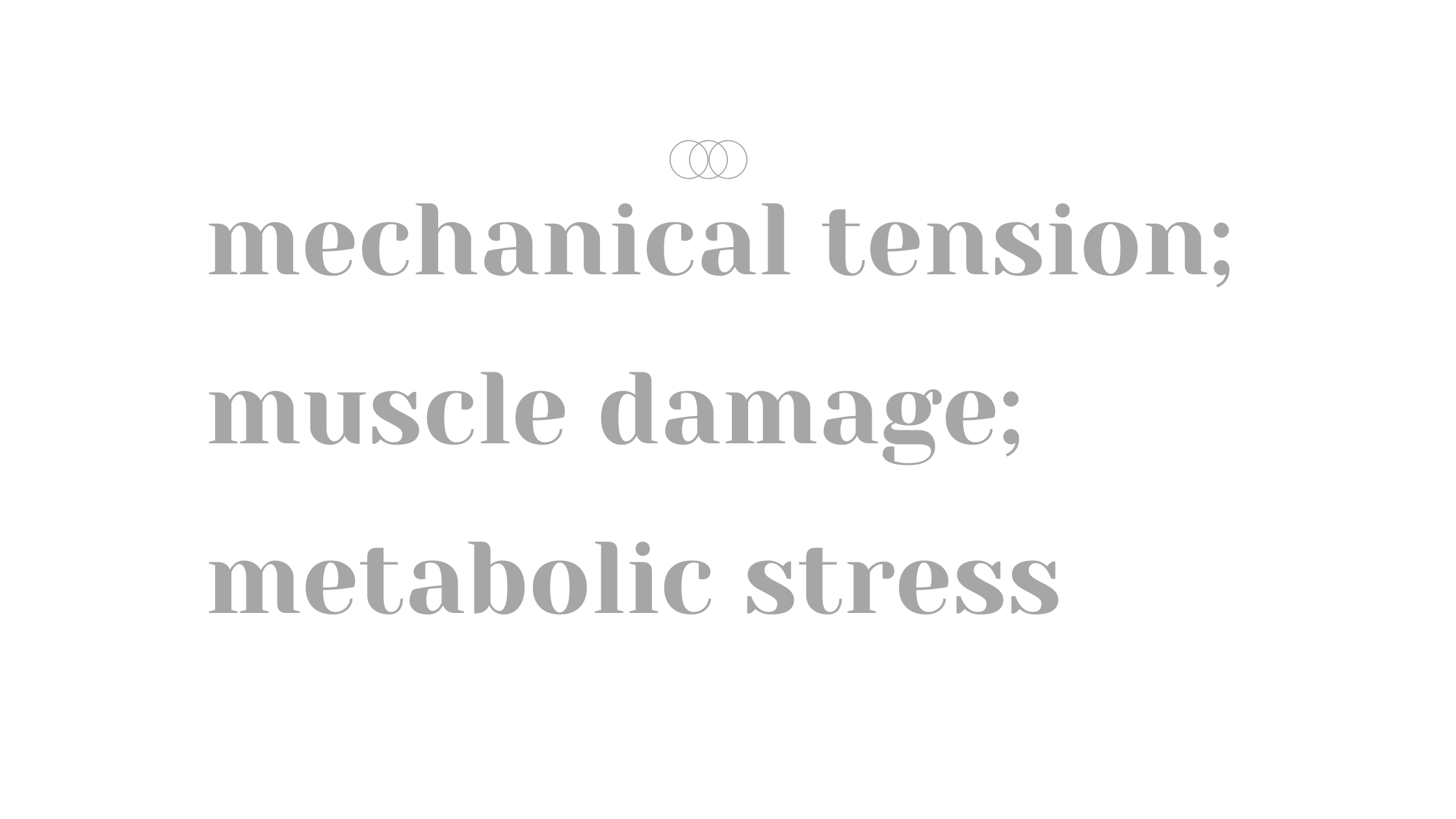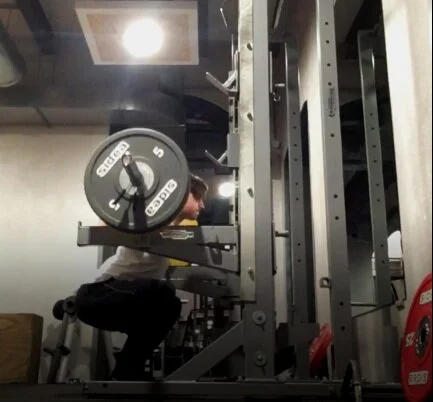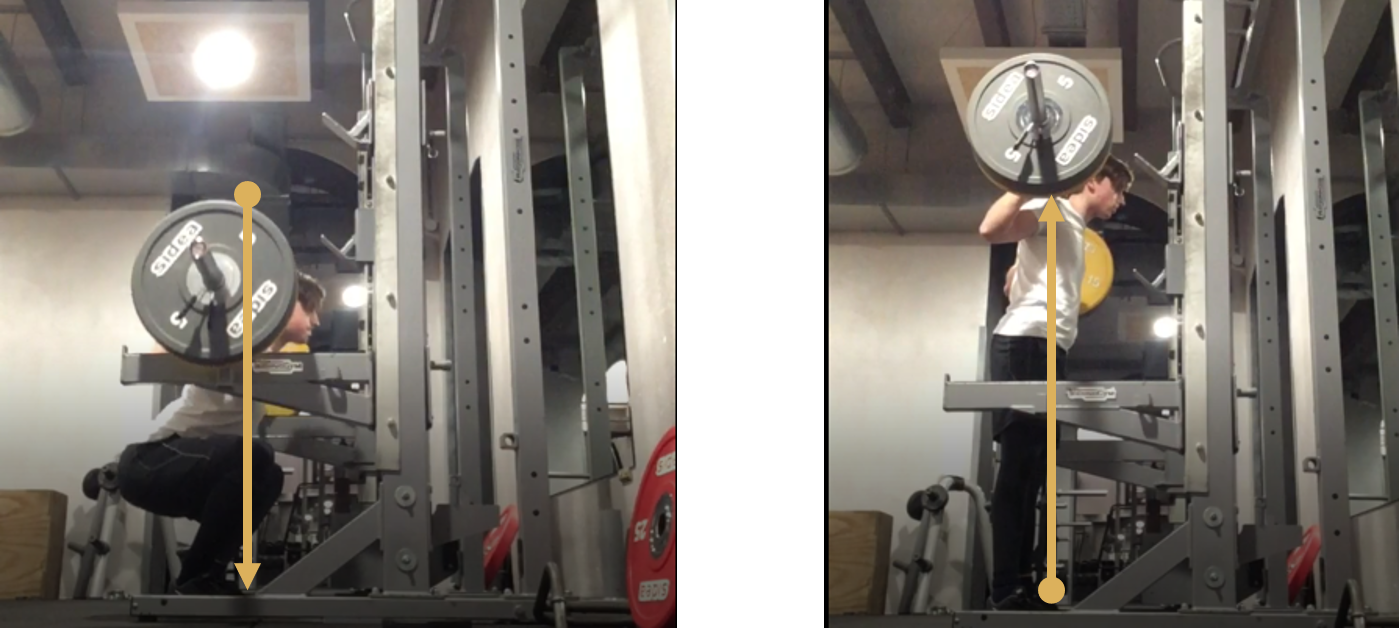THE 3 MECHANISMS OF MUSCLE HYPERTROPHY
There are 3 fundamental principles at the very heart of muscle hypertrophy and weight training. They are 3 concepts that must be respected and implemented in workout routines in order to elicit the most hypertrophy (the increase in muscle mass) while being as effective as possible in the process.
They are Mechanical Tension, Muscle Damage, Metabolic Stress. Weight Training programs (and also bodyweight routines for that matter) must account for these principles and mix them properly together in order to lead to the best results. While in workout programs using weights mechanical tension and muscle damage are the prominent concepts at play, bodyweight programs have to leverage on metabolic stress to a greater extent compared to weight training routines due to the limited amount of external load and progressive overload* that can be used.
Now, let's define each fundamental training principle and analyze how they are applied in real-life workout sessions.
Mechanical Tension
Loading muscles with an external force (weight) is key when it comes to making them grow bigger and stronger. Mechanical tension is the overloading force placed on the muscle fibers through a full range of motion**, i.e. full stretch and full contraction, or dynamic movement. In a squat, full range of motion means going all the way down as deep as your body allows without rounding your lower back, and all the way up to full contraction of the leg musculature and straight legs.
Muscle Damage
Muscle damage is defined as "localized damage to muscle tissue which, under certain conditions, is theorized to generate a hypertrophic response" by Schoenfeld in his 2010 article in the Journal of Strength and Conditioning research. Training under load generates micro damages in muscle fibers, which, with recovery, grow back bigger and more resistant.
DOMS (delayed onset muscle soreness - the muscle soreness often experienced in the days following a training session) are a vivid manifestation of muscle damage. However, muscle soreness is not a necessary condition indicative of muscle damage. As a matter of fact, it normally occurs only when novelty is at play (performing an exercise for the first time) or when there is a huge amount of strain put on the muscle, for instance by accentuating the eccentric phase (lowering phase) of an exercise. So, muscle soreness does not have to be necessarily occurring in order for muscle damage to take place. But novelty is an important factor to account for and strategically introduce in training programs, although it should not be used too often.
Metabolic Stress
Metabolic stress is a physiological process that occurs during exercise in response to low energy that leads to metabolite accumulation [lactate, phosphate inorganic (Pi) and ions of hydrogen (H+)] in muscle cells. — (Role of metabolic stress for enhancing muscle adaptations: Practical applications)
This mechanism of muscle growth is basically activated through constant tension on the muscle for a relatively long period of time. Which makes it come into play when high reps and continuous tension is placed on the muscle worked. The burning sensation in the muscle when performing an exercise for medium to high repetitions, the pump achieved through exercises done in the medium to high rep range can be considered 'signals' of metabolic stress occurring.
Contrarily to mechanical tension, metabolic stress is best activated via lighter weights and medium to high repetitions, performed with a slow tempo (the time of execution of each repetition) and a high mind muscle connection (feeling 'the burn' in the muscle targeted). This will place a lot of blood in the muscle area of focus and elicit the 'pump'.
So What?
These mechanisms of hypertrophy are interrelated and must be exploited in the most effective way possible if the goal of a training program is pure hypertrophy. What this means is that focusing only on lifting heavy weights for low repetitions (mechanical tension) or just using light weights and having the mere goal of 'training for a pump' are not optimal ways to elicit the most muscle growth.
As a matter of fact, if the objective is to maximize muscle hypertrophy, being aware of these pathways and making sure that all of them are recruited is necessary. So, training programs should include exercises which are best-suited for mechanical tension and progressive overload - generally compound* movements fall into this category - such as squats, deadlifts, bench press, pull ups, overhead press, chin ups, hip thrusts, barbell rows. That's due to the fact that these exercises have the potential to be loaded with very heavy weight over time and allow for progressive overload to take place fairly easily compared to isolation exercises.
And they should also include exercises aimed at fostering muscle damage and metabolic stress - these would be isolation exercises (aimed at targeting only one muscle group) such as machine-based movements, bicep curls, chest flies, tricep extensions, pullovers, lateral raises, leg extensions, leg curls, calf raises. Exercises to be performed in the 6-15 rep range, which is the sweet spot for muscle damage and metabolic stress.
An example of a training session for legs which takes into account mechanical tension, muscle damage and metabolic stress is this (it would be one of two legs workouts for the week):
Footnotes
progressive overload: 'According to this basic training principle, training must include overload and progression to be successful. The body must be overloaded so that it has to work harder than normal. As the body adapts to a particular workload, the person should progress to a higher work level. For example, to gain strength, the muscles must be loaded beyond the point at which they are normally loaded. As the muscles become stronger, the load has to be increased to stimulate further strength increases. The load should be increased gradually over a long period of training. If the load is too high, there is a risk of overtraining and overuse injuries'. - definition of Oxford reference.
full range of motion: 'When you lift weights through a full range of motion, the muscles are placed under a combination of passive and active tension since they are stretched while being activated'. Full stretch and full contraction of the muscle/s worked is required. It is different from the concepts of passive contraction and active contraction, which are defined as - 'if you place tension on a muscle by stretching it passively (without letting it contract), the source of tension is called passive elastic tension. If you place tension on a muscle by flexing it as hard as possible via an isometric contraction, the source of tension is known as active tension.' - explanation from Bret Contreras.
compound movements: exercises that work multiple muscle groups at the same time. For instance, the squat is a compound movement because it works simultaneously the quadriceps, glutes, hamstrings, even though to different degrees of activation.
Additional Resources
https://bretcontreras.com/training-for-maximum-muscle-growth-explained/




